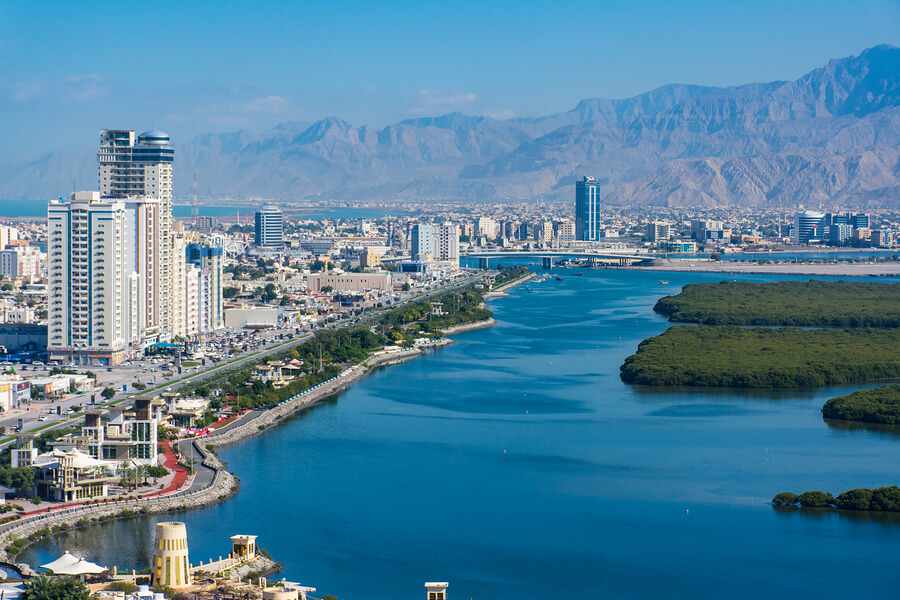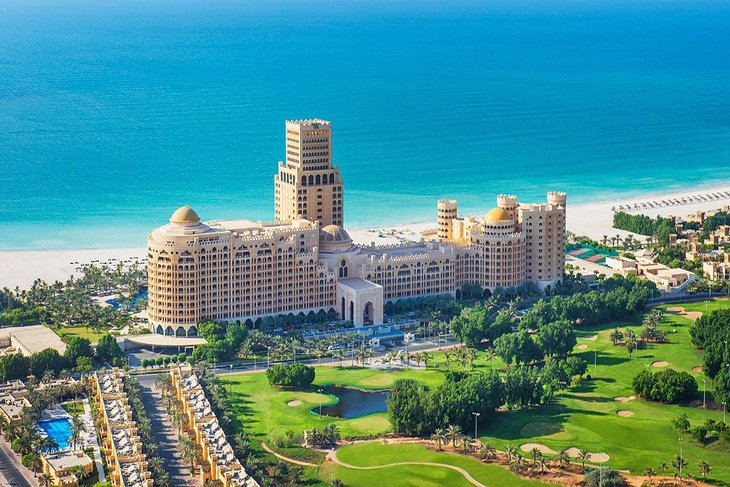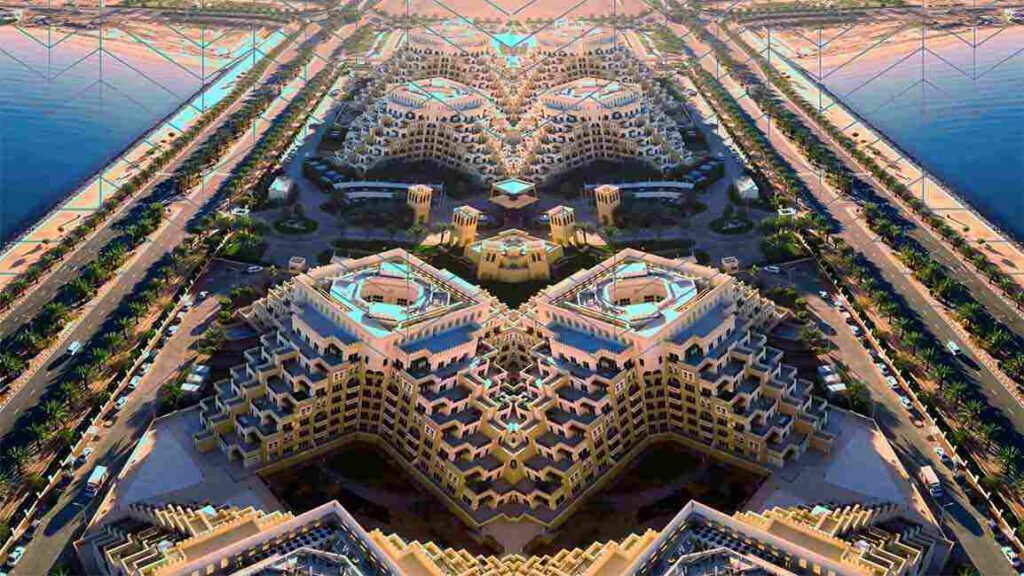Exploring Ras Al Khaimah: A Fast-Developing Tourist Destination

By: Habeeb Salloum/Arab America Contributing Writer
To many travellers, of the seven United Arab Emirates states, only Abu Dhabi, Dubai and Sharjah are usually recalled. The overwhelming dominance of these three Emirates in population, commerce, greenification and galloping evolvement into the modern world have made them meccas for businessmen, tourists, and other travellers. However, the other four Emirates: Ajman, Umm Al Quwain, Ras Al Khaimah and Fujairah, all have their uniqueness and something different to offer visitors.
This day we had decided to explore Ras Al Khaimah (meaning the top of the tent), the furthest north of the Emirates. Past the Emirates of Ajman then Umm Al Quwain on the way to Ras Al Khaimah, we drove through a countryside bursting with sprouting structures. It appeared that here also the United Arab Emirates’ building boom was catching on. The desert that a few years back had been filled with blowing plastic bags was now prime real estate.
It had rained on and off for several days and one had a feeling that the still wet desert was about to burst with greenery. The blossoming countryside kept us company until we stopped to admire the newly built small town, sparkling in the sunlight. Like the hundreds of modern small urban centres built by the government, its bright white and blue colours and oriental style, made it architecturally pleasing to the eye.
From this village, it was only short distance to Ras Al Khaimah, once known as Julfar, famous as the birthplace of the 15th century of Ahmad ibn Majid, one of the greatest and most illustrious Arab navigators of all times. It is the capital of the Emirate with the same name – the fourth largest Emirate in the UAE in terms of area and population and one of the region’s major agricultural areas. We entered the city via an avenue edged by shrubs and brightly coloured flowers that were dominated by sparkling new structures. This led to the old town, once the capital of an important naval power in the Arabian Gulf.
Although much of Ras al Khaimah’s area is bare mountains and desert, it is the UAE’s leading indigenous producer of agricultural and dairy products. The Emirate has a major seaport and international airport and is connected to the other emirates by modern highways, and has created an efficient infrastructure, including world- class hotels, hospitals, modern shopping centers and fine restaurants.
Today, it is a dynamically developing emirate and a growing investment hub in the UAE, racing ahead in developing commerce, industry and especially tourism. With the Hajar Mountains, overlooking lush green farms to the east, the Arabian Gulf to the west and the picturesque Musandam peninsula to the north, it is a land of natural beauty. This along with its cultural inheritance and excellent beaches, give Ras Al Khaimah an ideal base on which to build a thriving tourism industry.
Pre-pandemic Ras al Khaimah in 2019, received approximately 1.1 million visitors. Tourism officials hope to bring the same numbers back if not higher post-pandemic. The luxury hotels, residential complexes, beaches, sailing, hiking trails, desert safaris and other and tourist activities and attractions should lure them back.

Known in ancient times as Mafan, Ras Al Khamiah has a history that goes back to the age of Egypt’s Giza Pyramids. In 1997, a 5,000-year-old tomb of finely cut stone was found in this Emirate, full of artefacts and 100 bodies. There is an enormous defensive wall, erected from gravel with a mud brick-wall on top, has been discovered. The 7 km long and 2 m high dam was built to secure the fertile palm gardens that served as the main hinterland.
There are 170 archaeological sites from which have been uncovered stone tools and prehistoric tombs surrounding the much-sought-after Khatt Springs resort area consisting of three sulphuric springs of hot mineral water. It is a beautiful resort that lies hugged by the Hajar Mountains and surrounded by towering palm trees. The Islamic design of the buildings, healthy waters and attractive surroundings draw visitors from inside the United Arab Emirates and from abroad. The magnificent landscape surrounding the springs and the curative properties of the natural springs of hot water flowing from a depth of 350 m (1,148 ft) at a temperature of 40 degree centigrade can match the best mineral waters in the world.

The best time to travel to Ras Al Khaimah is in January when the annual Awafi Festival takes place. Fast developing into an international event and drawing some 150,000 annual visitors, it features chess tournament, horse races, puppet shows, traditional Arabic song and dance shows, colourful display of fire works and performances by band troupes. The festival venue also has various sections, including a Heritage Village, a bazaar and a children’s play zone. A family special focus has been given to attract families by offering a host of cultural and entertainment options and public amenities such as food outlets, internet-cafes, coffee shops and games area.
After exploring the town galloping into the future, we made our way on a road hugging the foot of the Hajar Mountains. The small coastal plain we were traversing is one of the few places in the UAE where vegetation grows without irrigation. Before the discovery of oil, this was the country’s breadbasket, and it continues today to produce a good portion of the UAE’s vegetables.
At Al Sha’am, the northernmost village on the Omani border, we turned back on our return journey. Opening the windows to let in the countryside breezes, fresh from the recent rains, I felt invigorated as we drove on a fine four-lane highway, experiencing not only body contentment, but also accomplishment. We had explored the still easy-going Ras Al Khaimah Emirates where a genie is fast transporting the land into a modern world of affluence.









